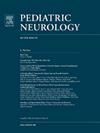儿童急性坏死性脑病的临床概况、重症监护需求和短期预后:印度北部一家三级医院的回顾性研究
IF 2.1
3区 医学
Q2 CLINICAL NEUROLOGY
引用次数: 0
摘要
儿童急性坏死性脑病(ANEC)是一种罕见的副感染性临床放射学综合征,其特征是神经系统迅速恶化和预后不良。方法我们在印度北部一家第四医院的儿科急诊科和重症监护室进行了为期11年(2014-2024)的回顾性研究。被诊断为ANEC的1个月至12岁的儿童被纳入研究。收集了人口统计学、临床特征、实验室和神经影像学发现、病因、管理和结果的数据。计算ANEC严重程度评分(ANE-SS)。结果纳入32例患儿(年龄中位数为4[四分位数间距,1 ~ 7]岁;53.1%的男性)。常见的临床特征包括意识状态改变(96.9%)、发热(93.7%)、癫痫发作(78.1%)和颅内压升高的迹象(46.9%)。器官功能障碍包括脑病(100%)、转氨炎(56.2%)和血小板减少症(46.9%)。神经影像学显示所有病例双侧丘脑受累。病因确定为37.5%,最常见的是登革热病毒(21.9%),其次是H1N1(6.2%)。重症监护干预包括机械通气(56.2%)和血管活性药物(31.2%)。免疫调节治疗包括甲基强的松龙(78.1%)、静脉注射免疫球蛋白(25%)和托珠单抗(15.6%)。生存率为78.1%。出院时,儿童脑功能分类评分中位数为3(3-4),表明中度至重度残疾。高风险ANE-SS与死亡率显著相关(P = 0.007)。结论sanec仍是一种严重的小儿脑病,神经系统发病率高。登革热病毒是该队列中最常见的触发因素。早期识别和重症监护支持以及免疫调节是关键。ANE-SS可作为一种有价值的预后工具。本文章由计算机程序翻译,如有差异,请以英文原文为准。
Clinical Profile, Intensive Care Needs, and Short-Term Outcome of Acute Necrotizing Encephalopathy of Childhood: A Retrospective Study From a Tertiary Care Hospital in North India
Background
Acute necrotizing encephalopathy of childhood (ANEC) is a rare parainfectious clinicoradiological syndrome characterized by rapid neurological deterioration and poor outcomes.
Methods
We conducted a retrospective study over 11 years (2014-2024) in the pediatric emergency and intensive care units of a quaternary hospital in North India. Children aged one month to 12 years diagnosed with ANEC were enrolled. Data on demographics, clinical features, laboratory and neuroimaging findings, etiology, management, and outcomes were collected. The ANEC Severity Score (ANE-SS) was calculated.
Results
Thirty-two children were included (median age, 4 [interquartile range, 1-7] years; 53.1% male). Common clinical features included altered state of consciousness (96.9%), fever (93.7%), seizures (78.1%), and signs of raised intracranial pressure (46.9%). Organ dysfunctions included encephalopathy (100%), transaminitis (56.2%), and thrombocytopenia (46.9%). Neuroimaging revealed bilateral thalamic involvement in all cases. Etiology was identified in 37.5%, most commonly dengue virus (21.9%), followed by H1N1 (6.2%). Intensive care interventions included mechanical ventilation (56.2%) and vasoactive drugs (31.2%). Immunomodulatory therapy included methylprednisolone (78.1%), intravenous immunoglobulin (25%), and tocilizumab (15.6%). Survival rate was 78.1%. At discharge, the median Pediatric Cerebral Performance Category score was 3 (3-4), indicating moderate to severe disability. High-risk ANE-SS was significantly associated with mortality (P = 0.007).
Conclusions
ANEC remains a severe pediatric encephalopathy with high neuromorbidity. Dengue virus was the most common trigger in this cohort. Early identification and intensive care support, along with immunomodulation, are key. ANE-SS may serve as a valuable prognostic tool.
求助全文
通过发布文献求助,成功后即可免费获取论文全文。
去求助
来源期刊

Pediatric neurology
医学-临床神经学
CiteScore
4.80
自引率
2.60%
发文量
176
审稿时长
78 days
期刊介绍:
Pediatric Neurology publishes timely peer-reviewed clinical and research articles covering all aspects of the developing nervous system.
Pediatric Neurology features up-to-the-minute publication of the latest advances in the diagnosis, management, and treatment of pediatric neurologic disorders. The journal''s editor, E. Steve Roach, in conjunction with the team of Associate Editors, heads an internationally recognized editorial board, ensuring the most authoritative and extensive coverage of the field. Among the topics covered are: epilepsy, mitochondrial diseases, congenital malformations, chromosomopathies, peripheral neuropathies, perinatal and childhood stroke, cerebral palsy, as well as other diseases affecting the developing nervous system.
 求助内容:
求助内容: 应助结果提醒方式:
应助结果提醒方式:


